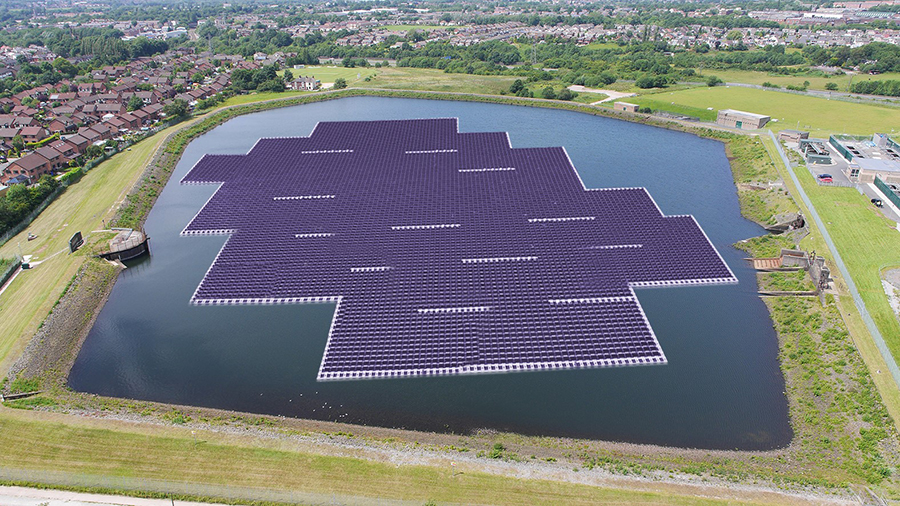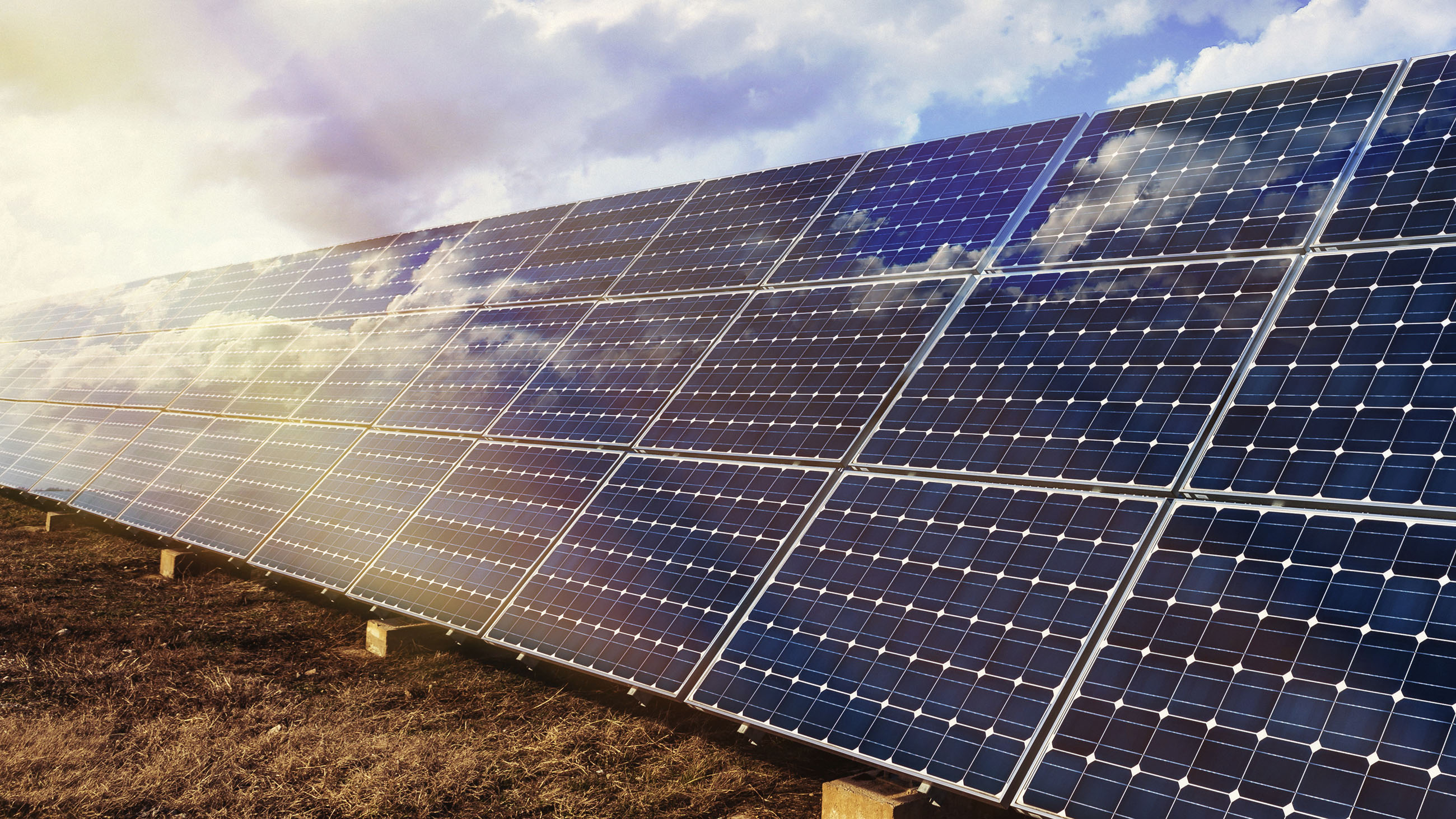Terra Firma or Aqua Corpus? Or, Where Best to Harness the Sun?
Earlier this month, The New York Times explored the emerging market for floating solar farms — essentially solar panels mounted to pontoons that float on lakes, ponds and reservoirs to generate power. The technology is catching on quickly. Earlier this year, a water utility in Britain installed a 6.3 megawatt farm on a reservoir near Heathrow Airport, and construction is currently underway on a 13.7 megawatt floating farm in Japan that will generate enough electricity to power around 5,000 homes for a year.

The Godley reservoir in Manchester, Great Britain, will host Europe’s biggest floating solar power system. (Visual by United Utilities)
Proponents of floating solar farms extol their benefits: They can mitigate evaporation, deter algal growth, and shelter aquatic life all while generating power and staying (mostly) out of the public’s view. Plus, the cooling effect of the water improves the efficiency of the photovoltaic (PV) panels, which are themselves continuing to come down in cost.
“The opportunities for floating systems are wonderfully diverse, from ponds, lakes and reservoirs,” said Daniel Kammen, a science envoy for the U.S. Secretary of State and professor of energy at the University of California Berkeley, in an email. “I’d expect that as the technology takes off, we’ll see innovators coming up with all sorts of clever applications.”
Given all the apparent benefits and attending enthusiasm, why is the floating solar farm market in United States still so underdeveloped? It may be because the nation is endowed with ample amounts of wide-open terra firma, making water-based solar systems unnecessary in many locales.
“The floating concept may be less relevant in the U.S. context due to our physical geography,” said Francis O’Sullivan, director of research at the MIT Energy Initiative. “Frankly, in the United States, our best solar resource happens to be in an arid part of the country, the Southwest.” That region’s hot, dry and sunny climate is also marked by a lot of open space – plenty of room to swing a rope, and plenty of room to build a ground-based solar plant.
As a result, there’s little pressure to site a solar plant on a reservoir when there’s already so much land available, O’Sullivan said, “and that may be why in the U.S., floating solar just hasn’t been explored to any great extent.”
The U.S. Department of Energy’s National Renewable Energy Laboratory (NREL) estimates that the United States has almost 10,000 square miles of suitable urban land and over 1.2 million square miles of suitable rural land – a total area the size of Argentina – for utility-scale solar installations.
In places like England, Japan and India, where open space is at a premium, O’Sullivan said, reservoirs and other bodies of water represent untapped potential when it comes to siting solar power. “In places where land is more of an issue, floating probably makes sense. The adoption of floating solar is really going to come down to a land availability issue.”











Comments are automatically closed one year after article publication. Archived comments are below.
Floating Solar Array’s wonderful idea. And it’s very important to maintain same direction and position on the water. Because directional change of solar panels reduces electricity production. So floating solar Array also needs the directional control mooring systems for it’s parked position. Azimuth and position change of floating solar plants caused by wind, waves and external forces. RFSMS(Restoring Force Strengthened Mooring System) for floating solar Array has been created by I N I WORLD in South Korea. This Mooring System generates Restoring Force immediately when floating solar plants are being rotated or moved on the water. You can see this System in Ir-wol reservoir and O-chang Dam Floating Solar Array, South Korea.
In addition, you have to reduce vibration to install floating solar plants. Because, it can make micro-cracks to floating solar panels and the durability problem of floating solar plants. The risk of power loss in PV modules due to micro cracks is increasing. New Type Floating Body Stabilizer has been created by I N I WORLD in South Korea. The Floating Body Stabilizers generate drag force immediately when floating solar plants are being rolled, pitched and yawed on the water.